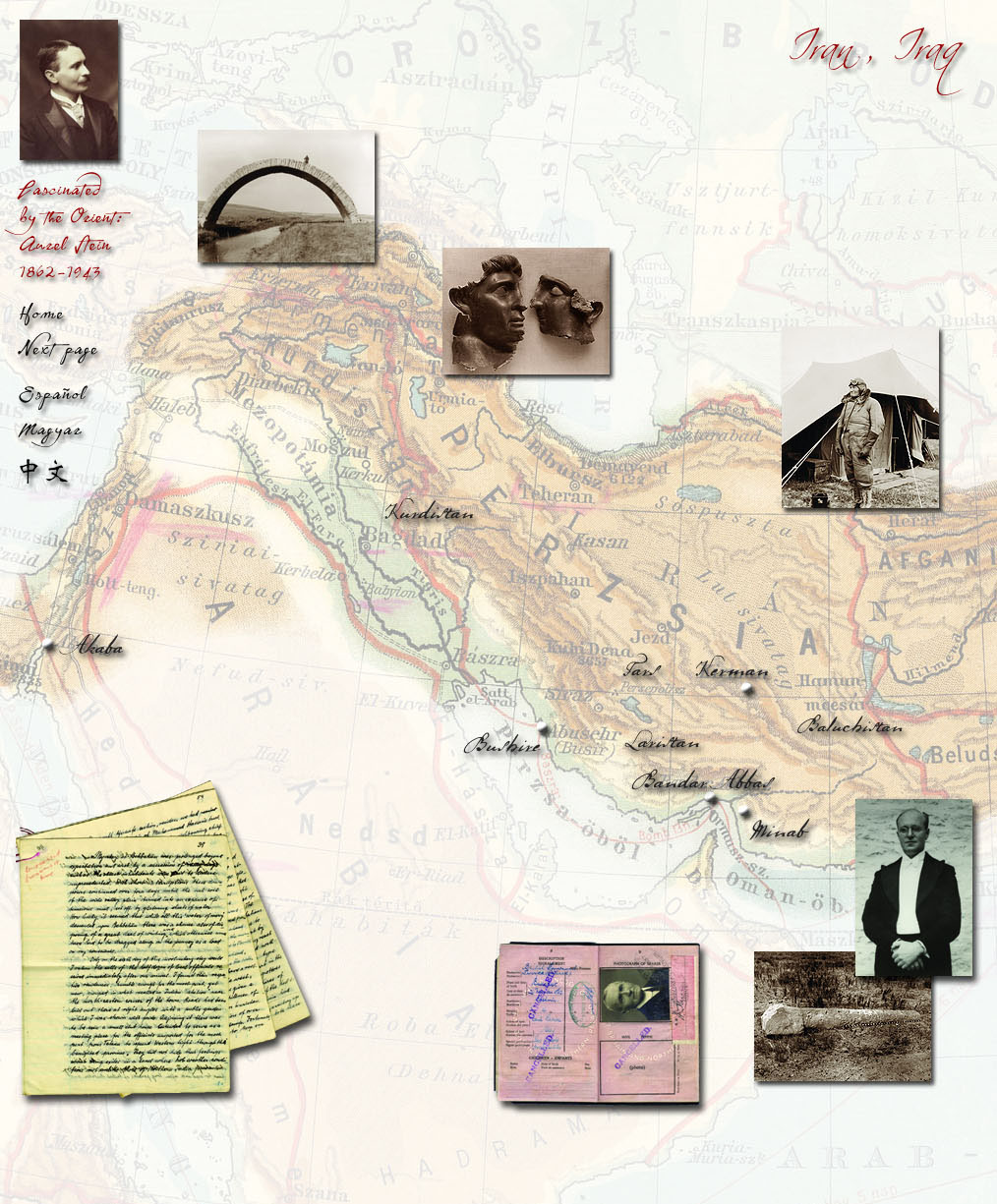 In the 1930s Stein organised four archaeological expeditions to Iran. He
was a student of Iranian studies and at the end of his third Central
Asian expedition he had already visited its eastern borders with
Afghanistan. He knew well the events and places connected with Alexander
the Great’s conquest of Persia, and had encountered Iranian influences
in written documents and artefacts while on the eastern Silk Road.
In the 1930s Stein organised four archaeological expeditions to Iran. He
was a student of Iranian studies and at the end of his third Central
Asian expedition he had already visited its eastern borders with
Afghanistan. He knew well the events and places connected with Alexander
the Great’s conquest of Persia, and had encountered Iranian influences
in written documents and artefacts while on the eastern Silk Road.
 In January 1932 he visited Persian Baluchistan and travelled to Kerman.
For this short expedition he employed a Hungarian assistant, the young
Indologist Károly Fábri (1899-1968). In September he set off again for
Iran, and during his second expedition from 1932 to 1933 he continued
his explorations along the Persian Gulf, passing through Minab, Hormuz,
Bandar Abbas, and the costal area of Laristan to Bushire.
In January 1932 he visited Persian Baluchistan and travelled to Kerman.
For this short expedition he employed a Hungarian assistant, the young
Indologist Károly Fábri (1899-1968). In September he set off again for
Iran, and during his second expedition from 1932 to 1933 he continued
his explorations along the Persian Gulf, passing through Minab, Hormuz,
Bandar Abbas, and the costal area of Laristan to Bushire.
 On his third
expedition (1933-1934) he travelled through eastern Fars, while the
fourth Iranian expedition (1935-36) took him from western Fars to
Iranian Kurdistan. During these expeditions, he excavated sites dating
from the Neolithic to the Islamic period.
On his third
expedition (1933-1934) he travelled through eastern Fars, while the
fourth Iranian expedition (1935-36) took him from western Fars to
Iranian Kurdistan. During these expeditions, he excavated sites dating
from the Neolithic to the Islamic period.
